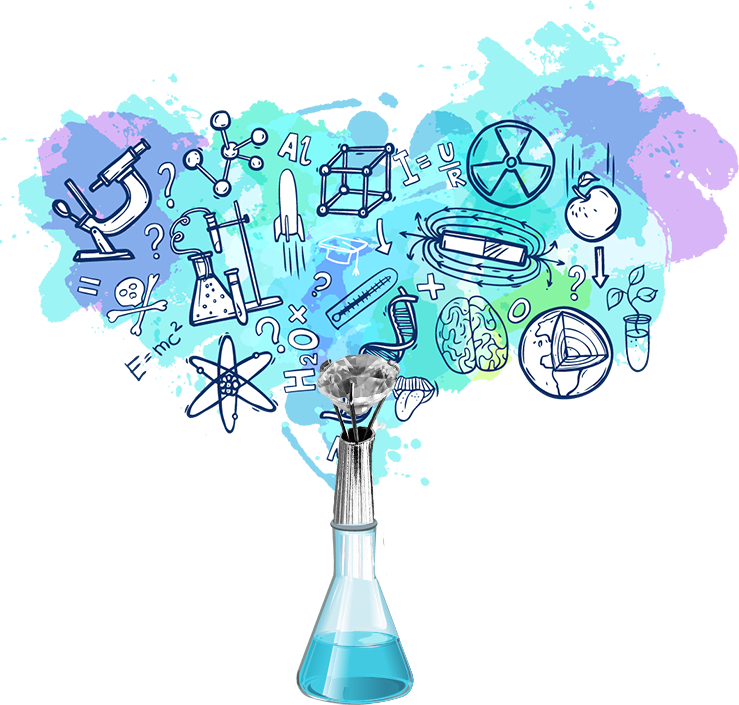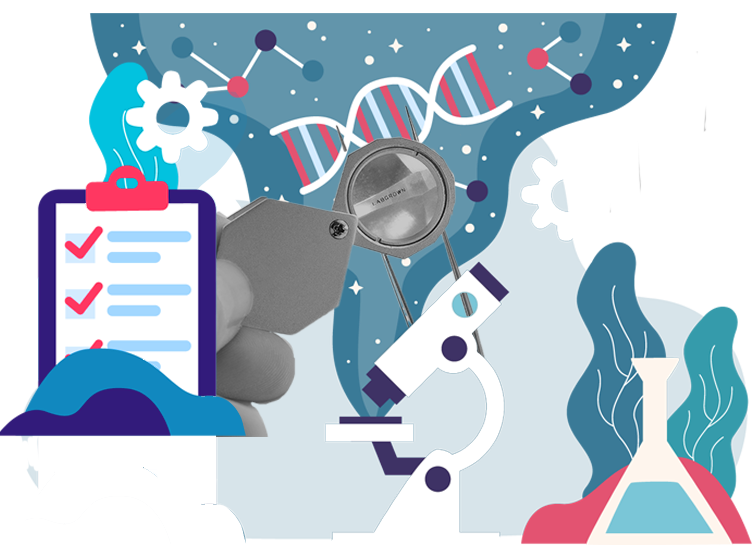
Lab grown diamonds represent a huge leap forward for the diamond industry. For most of history, diamonds have been mined from the ground. The mining process is expensive, labor-intensive, environmentally harmful, and often dangerous. The diamonds you get out of mines are all the product of millennia of natural processes which produce diamonds of varying quality and appearance.
Lab grown diamonds are different; they are made in as little as a few weeks with an advanced industrial process in a controlled lab setting. This safer, greener process ended the monopoly of a few diamond mining companies and opened up the market to a new range of products.
From the initial technological discoveries that made the process possible to the latest techniques, lab grown diamonds have disrupted the diamond industry and offered better, less expensive products to the public. Discover more about lab grown diamonds’ fascinating history.
Diamonds have been treasured ever since prehistoric man first discovered them. Diamonds are thought to be first found in river mud in ancient India and China approximately 6,000 years ago. The oldest polished diamond dates from 4,500 years ago, and the oldest textual reference dates from 500 BCE.
For most of history, we didn’t know what they were made from but often used them for religious icons due to their perceived preciousness and rarity.
In an experiment in 1772, French scientist Antoine Lavoisier placed a diamond in an oxygenated atmosphere and exposed it to high-intensity sunlight. The only product of the resulting combustion was carbon dioxide, proving for the first time that diamonds were made of carbon.
English scientist Smithson Tennant confirmed the results in 1797 and gave chemical equivalents to the exact makeup of diamonds.
As diamonds have been valued since ancient times, people have tried to make them out of cheaper materials. Like old charlatans who tried to make gold from lead, many fraudsters made big claims about being able to make diamonds, but the scientists James Ballantyne Hannay and Ferdinand Frédéric Henri Moissan were the first to use the technologies of the new industrial revolution to attempt to make diamonds.
In the 1880s, they both tried heating a mixture of charcoal and iron in a carbon crucible. They heated it to 3,500℃ in a blast furnace to see if the mixture would turn into a diamond. Unfortunately, the pressure needed to convert the carbon into a diamond was impossible with the technology they had; attempting it would have been extremely dangerous. Thus, they were unsuccessful, but it didn’t stop scientists from trying to discover new ways to make synthetic diamonds.
After decades of attempts, the first synthetic diamonds were made by the General Electric (GE) corporation made the first synthetic diamonds in December 1954. The beginnings of the breakthrough began in the 1940s when American Nobel Laureate Percy Bridgeman first made a hydraulic device capable of the pressures needed to form a diamond. His machine was capable of creating 4,200 atmospheres in a confined space.
Building on this technology, GE established a laboratory in Schenectady, New York, where they brought together some of the best physicists, chemists, and engineers of the day to create a synthetic diamond. They started a project called “Project Superpressure” to see if they could create a crucible capable of forming a diamond.
On December 8th, 1954, scientist Herbert Strong put a mixture of carbon and iron, along with two seed crystals into a crucible, heated them to 1,250°C (2,282°F), and pressurized them up to 50,000 atmospheres. He let the machine run overnight and, in the morning, discovered a stone.
Initially disappointed with the results, he sent the stone to be polished to see what it might be. The stone broke the polishing machine, and only a diamond was capable of such damage. An X-ray confirmed what the scientists first thought: they had created a synthetic diamond.

While the first synthetic diamonds represented a leap forward in technology, they were unsuitable for jewelry purposes, and it was easy to tell lab grown diamonds from natural due to their low-quality appearance. Lab grown diamonds generally became replacements for industrial diamonds used in manufacturing.
It took the development of two additional diamond-making techniques, High Pressure/High-Temperature in the 1970s and Chemical Vapor Deposition in the 1980s, before jewelers struggled to tell if a diamond is lab grown.
The High Pressure/High-Temperature (HPHT) technique was the first major technique used to produce high-quality lab-grown diamonds. This is an evolution of the original method used at GE.
Diamond seeds and a metallic alloy are placed into a mold or growth chamber. The mold is heated to 1,300-1,700℃, and a hydraulic anvil applies up to 6.5 GPa.
The heat and pressure cause the metals to dissolve and begin to form the diamond lattice structure of the seed diamonds. While this process is effective and can even be used to improve the quality of natural diamonds, it is time-consuming, expensive, and complicated.
When did lab grown diamonds start becoming more commonplace? The 1980s saw the adoption of the more advanced, more efficient Chemical Vapor Deposition (CVD) method for making diamonds.
Currently, this is the most common method for how lab grown diamonds are made. Using this method, diamond seeds are placed on a growth plate. The plate is placed in a chamber filled with hydrocarbon gas and heated to 900-1,200℃. The chamber is bombarded with microwave beams that cause the carbon in the gas to precipitate and deposit on the seed diamonds’ crystal lattice structure.
In the 1980s, manufacturers could only use one seed at a time, but currently, they can fill an entire plate with numerous seeds, allowing many diamonds to grow at once. This is the real start of mass-produced, gem-grade jewelry diamonds.

As of 2020, lab grown diamonds are a $19.3 billion industry expected to grow at 9.4% annually to $49.9 billion in 2030. Lab grown diamonds made up 18.7% of engagement ring sales in 2020 and jumped to 28.4% of sales in 2021. This growth is based on a more eco-conscious diamond-buying demographic that frequently asks are lab grown diamonds better for the environment and if they are a more ethical choice.
Many other consumers are concerned over the price and wonder, are lab grown diamonds less expensive than natural diamonds? Lab grown diamonds are often indistinguishable from their natural counterparts, and the production process means they are less expensive, allowing consumers to get a bigger diamond for their money.
There is also no risk of purchasing diamonds mined in conflict zones. These trends are set to continue, and the coming decade should see more consumers asking where can I buy lab grown diamonds.
Many potential diamond buyers have concerns about buying one of these revolutionary stones. Many wonder are lab grown diamonds as strong as real diamonds or if they are as beautiful.
Lab grown diamonds are identical to natural diamonds because they were grown using the same natural formation process, just in an accelerated and more precise way. The only minute difference between natural and lab grown diamonds occurs at a molecular level.
Natural diamonds contain a trace amount of nitrogen, which can only be perceived by qualified gemologists. The lack of nitrogen does not disrupt the stone’s diamond formation, clarity, or color.
Practical diamond consumers also wonder if you can insure a lab grown diamond. You can and should insure these diamonds as they are valuable precious stones. The insurance premiums are often lower than their natural counterparts, saving you money over the longer term in addition to the lower upfront costs. For those still uncertain about the authenticity of lab grown diamonds, here is a helpful article that could assist you in determining if a diamond is real or not.
If this fascinating history leaves you wondering who sells lab-grown diamonds, the good news is that they are sold in jewelry shops nationwide. Just ask your local jeweler if they offer these innovative products.
If you are looking for more advice and knowledge about diamonds, rings, and weddings, check out The Groom Club today to learn more.